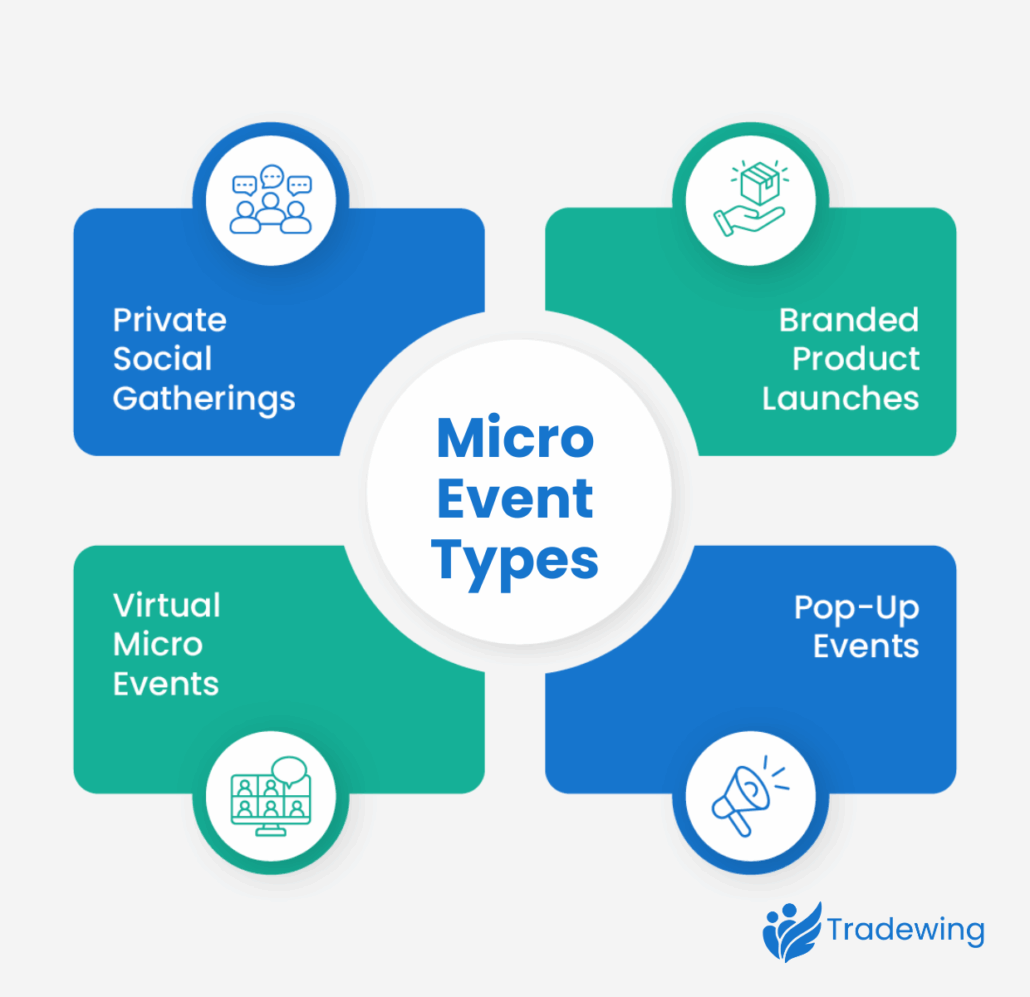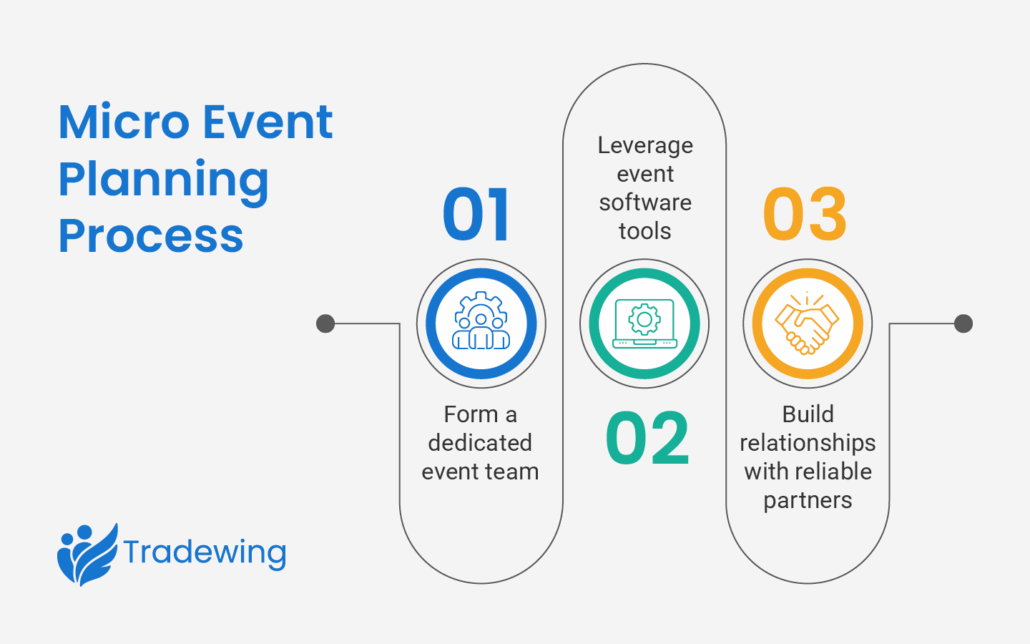How to Host an Association Micro Event: FAQ + Best Practices
Events are a core part of many trade and professional associations’ offerings. From annual conferences to virtual gatherings hosted through your engagement platform, events bring members together to network, improve their skills, and learn about the latest developments in their industry.
As associations look to expand engagement without overextending resources, micro events are gaining traction as a smart, scalable way to engage current members and attract new ones.
To help your association make the most of micro events, this guide will explore exactly what micro events are and share tips for hosting ones that strengthen member relationships and boost your acquisition rates.
Association Micro Events FAQ
What Is a Micro Event?
Micro events are small-scale gatherings that typically last anywhere from half a day to just half an hour. Unlike large conferences that draw hundreds or thousands of attendees, micro events often welcome fewer than 100 participants, and some gatherings are as intimate as just 10 guests.
Micro events’ compact format allows associations to form deep connections with a handful of attendees without the extensive planning needs of large-scale events. Associations can use micro events to host frequent, high-impact experiences throughout the year without stretching their budgets.
What Are the Different Types of Micro Events?
Micro events are incredibly versatile, offering associations a variety of ways to engage members. Popular formats include:

- Private social gatherings offer a relaxed setting for networking, member appreciation, and deepening relationships within your community.
- Branded product launches are ideal for spotlighting industry innovations. Trade and professional associations often host these when collaborating with sponsors.
- Pop-up events create buzz through short, surprise booths hosted in high-traffic areas. These events often have minimal promotion and rely on catching the interest of passersby to maximize impact.
- Virtual micro events bring members together online for focused activities like workshops, Q&As, or small-group discussions, offering an accessible way to engage with your association.
With the right strategy, micro events can deliver outsized impact without outsized budgets.
Why Should Associations Host Micro Events?
Associations can benefit greatly from hosting micro events. Through their high flexibility and low costs, these small-scale gatherings allow associations to connect with current and prospective members while elevating sponsors.
By incorporating micro events into your event strategy, your associations can stay agile, deliver consistent value, and maintain year-round member engagement.
Association Micro Events Best Practices
1. Determine Your Attendees
Unlike large-scale conferences that must appeal to broad audiences, micro events can be catered to highly specific member segments. By hosting several smaller events, associations can address the diverse needs, interests, and career stages of their members.
Use your association management system to analyze your membership data and create unique audience segments. Then, plan various micro events tailored to each group’s interests and goals. For instance, your professional association might host a resume review workshop or interview prep session for members seeking to enter your industry. Meanwhile, for established professionals, you might plan a sponsor-led product demonstration that showcases tools or innovations relevant to their daily work. This targeted approach ensures every event delivers maximum value and engagement.
2. Standardize Your Event Planning Process
If your association plans to host multiple micro events each year, a standardized event planning process is key. By having a structured system for hosting micro events, your team can put together these activities quickly without sacrificing quality, no matter what type of micro event you’re hosting.
To systemize your approach:
- Form a dedicated event team responsible for planning and logistics.
- Leverage software tools to create standardized workflows, ensuring each micro event follows the same reliable setup, promotion, and follow-up procedures.
- Build relationships with partners, such as trusted sponsors, vendors, and venue providers, who can help streamline your planning cycle.
By developing repeatable processes, your association can scale its event hosting frequency without increasing stress or administrative burden.
3. Provide Engaging Activities
Micro events may be short in duration, but they should never be short on interaction. To make your gatherings memorable, include hands-on activities that attendees will remember. After all, many micro events are meant to show off your association benefits, persuading prospective members to sign up.
To ensure your micro events engage members, consider centering them around:
- A product demonstration where attendees can experience new innovations firsthand. To generate additional revenue and build relationships with businesses in your industry, you can offer co-hosted product demonstrations as a sponsorship benefit.
- Free samples or interactive demos to spark conversation and curiosity. These are particularly useful for pop-up micro events, which must grab the interest of people passing by to be a success.
- A meet-and-greet with industry leaders, sponsors, or other members. For casual, social-oriented micro events, consider inviting a few industry experts and other professionals so members will be inclined to stay and make connections. Some conversations may even continue online via your community platform.
Even in brief timeframes, activities like these help foster connection and create meaningful takeaways for attendees.
4. Use Event Management Software
Whether your micro event hosts 20 people or 200, event management software can ensure everything runs smoothly. Membership engagement platforms with event tools, like Tradewing, streamline the entire event lifecycle, from planning and promotion to post-event engagement.
Tradewing’s association management software supports micro event logistics by simplifying registration, automating communications, and providing valuable analytics. Meanwhile, Tradewing’s online community features ensure engagement extends beyond each individual event by allowing attendees to continue conversations, share resources, and strengthen their relationships online.
More Micro Event Resources
Micro events can strengthen member engagement and deliver value consistently throughout the year without straining your association’s budget. By hosting events for a range of audiences, standardizing your event planning processes, and leveraging technology to support event execution, associations can elevate every member’s experience.
For more tips on optimizing your micro event strategy, check out these helpful resources:
- The 10 Best Association Websites + Must-Know Design Tips. After your micro event, guests will look to your website to learn about your association. Ensure your site makes a good impression with these tips.
- Mastering Your Membership Directory: How to Get Started. A membership directory allows your members to easily find one another and build connections. Discover the value of this tool and how to set up your own directory.
- The Ultimate Community Management Platform Buyer’s Guide. Community platforms allow your members to keep in touch after your micro event wraps up. Learn what to look for when assessing software.








